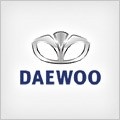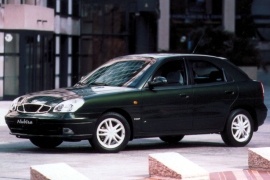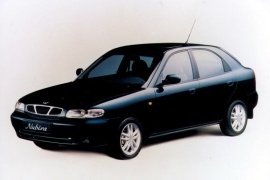
DAEWOO Nubira Hatchback
Generations Timeline, Specs and Pictures

Designed as a replacement for the aged Nexia, the Nubira hatchback was a last-minute offer that couldn’t convince the market, but it was launched anyway by the dying Korean carmaker.
The “Nubira” meant “to go anywhere” in Korean, and the carmaker believed that it would fill everyone’s needs for an affordable, reliable transportation solution. Daewoo introduced the range in 1997, and three years later, it rushed with a facelifted version for the entire range, including on the hatchback body shape.
There were around 90 modifications to the car, and the Koreans thought that there were enough. The front and the rear were redesigned to look more modern, and the side mirrors were larger for increased visibility. For the hatchback version, Daewoo left the same rear end and same taillights.
Daewoo used new fabrics for the cabin, as well as new seats for enhanced comfort. Safety was also improved with the new child seat-tether anchors and three-point belts for all three positions. That was a true improvement, appreciated mostly by young families with children.
The Daewoo Nubira was available in two trim levels: SE and CDX. The customers got a 6-speaker sound system with the base-level SE, a height-adjustable seat, and 4-wheel disc brakes. The better-equipped CDX received air-conditioning, alloy wheels, cruise control, antilock brakes, optional leather upholstery, and a moonroof.
Daewoo offered the Nubira with only one engine: an Australian 2.0-liter unit that developed 129 hp. The powerplant was paired as standard with a 5-speed manual transmission or an optional automatic gearbox.

The Nubira was introduced in 1997 as a replacement for the older, Opel based-platform of the Daewoo Nexia/Cielo, and the Italian I.DE.A designed it. Institute.
While the rest of the range was closer to the mid-size segment, the 5-door hatchback aimed clearly into the compact-segment. It was, probably, one of the biggest challenges for the Korean carmaker to make its way into the European market. Unfortunately, Daewoo’s financial situation didn’t become better, and, eventually, it filed for bankruptcy and ended up being bought by General Motors.
Nubira featured a biodesign-inspired styling from the outside, with not a single straight line on its bodywork. Its headlights were horizontally mounted but with rounded edges. Its sideline was identical to the sedan version up until the C-pillar, including the doors. It was an economic decision that made the car looks like it was missing a trunk.
Daewoo offered the car in 6 different trim levels: SE, EuroSunHatch, SX, SE, X-Series, and CDX. The SE’s standard features included a radio and cassette player with a 4-speaker sound system, A/C, and central locking. While the SX was not equipped with A/C, it had a 6-speaker sound system, CD player, and powered windows.
The CDX trim level added alloy wheels, and the interior trim was upgraded. The Nubira EuroSunHatch featured a folding sunroof that extended to the rear passenger seats. Safety-wise, the only available systems were the front airbags and ABS. Overall, the car offered fair options for its price.























































